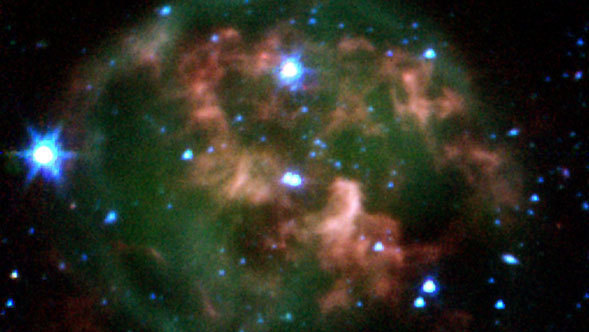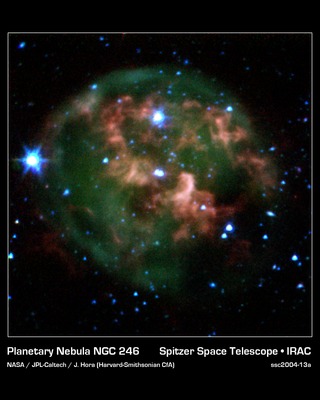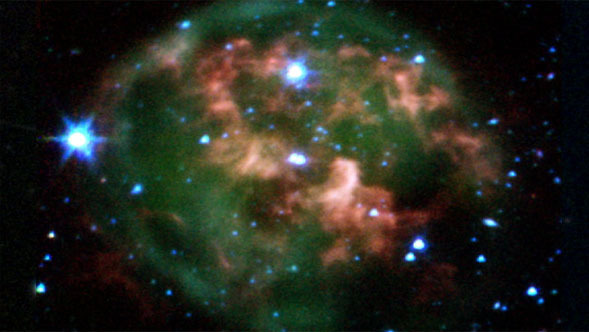Spitzer Discovers Hidden Ring
Science Animations Video • August 9th, 2004 • ssc2004-13v1
This animation transitions from a visible light image of the planetary nebula called NGC 246 to Spitzer's new infrared view. The movie highlights Spitzer's ability to see the invisible; as the movie dissolves to the Spitzer image, a giant ring (red) emerges. This clumpy ring consists of material that was expelled from the aging star at the center of the nebula.
Planetary nebulas are clouds of gas and dust that surround dying stars. When a star like our own Sun begins to run out of fuel, its core shrinks and heats up, boiling off the star's outer layers. Leftover material shoots outward, expanding in shells around the star. This ejected material is then bombarded with ultraviolet light from the central star's fiery surface, producing huge, glowing clouds -- planetary nebulas -- that look like giant jellyfish in space.
In the Spitzer image, the expelled gases appear green, and the ring of expelled material appears red. Astronomers believe the ring is likely made of hydrogen molecules that were ejected from the star in the form of atoms, then cooled to make hydrogen pairs. The new data will help explain how planetary nebulas take shape, and how they nourish future generations of stars.
The Spitzer image composite was taken on Dec. 6, 2003, by Spitzer's infrared array camera, and is composed of images obtained at four wavelengths: 3.6 microns (blue), 4.5 microns (green), 5.8 microns (orange) and 8 microns (red).
The visible light image is from the Advanced Observing Program of the National Optical Astronomy Observatory. Visible-light image credit: Jeff Cremer/Adam Block/NOAO/AURA/NSF
Video Credit: NASA/JPL-Caltech/R. Hurt (SSC/Caltech)






